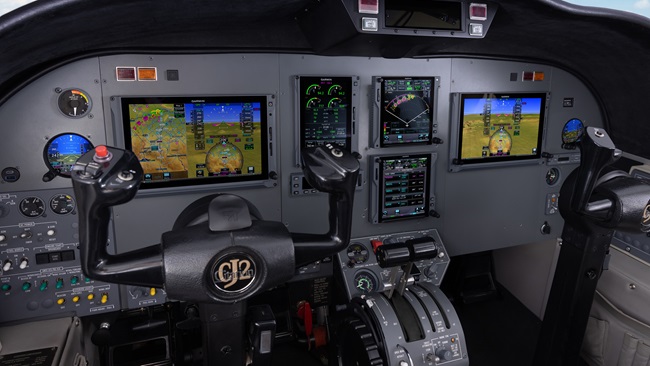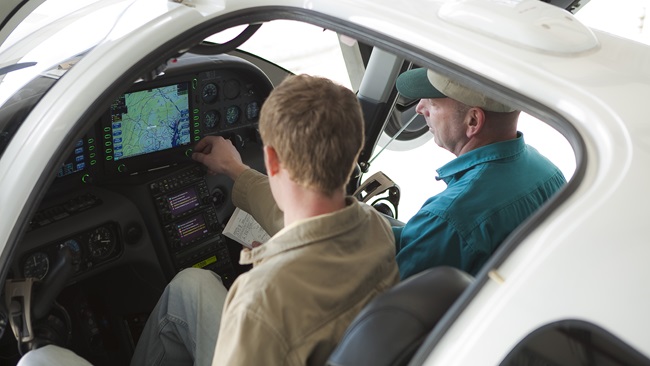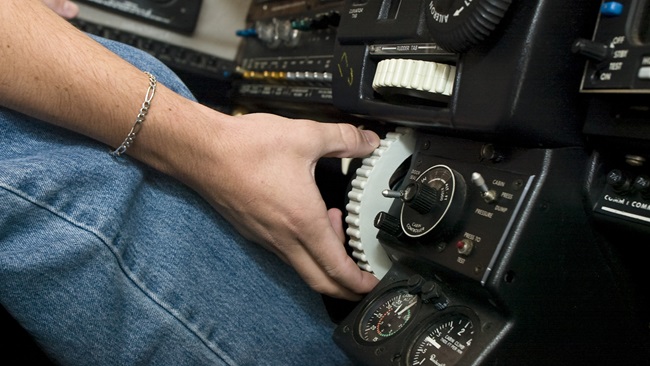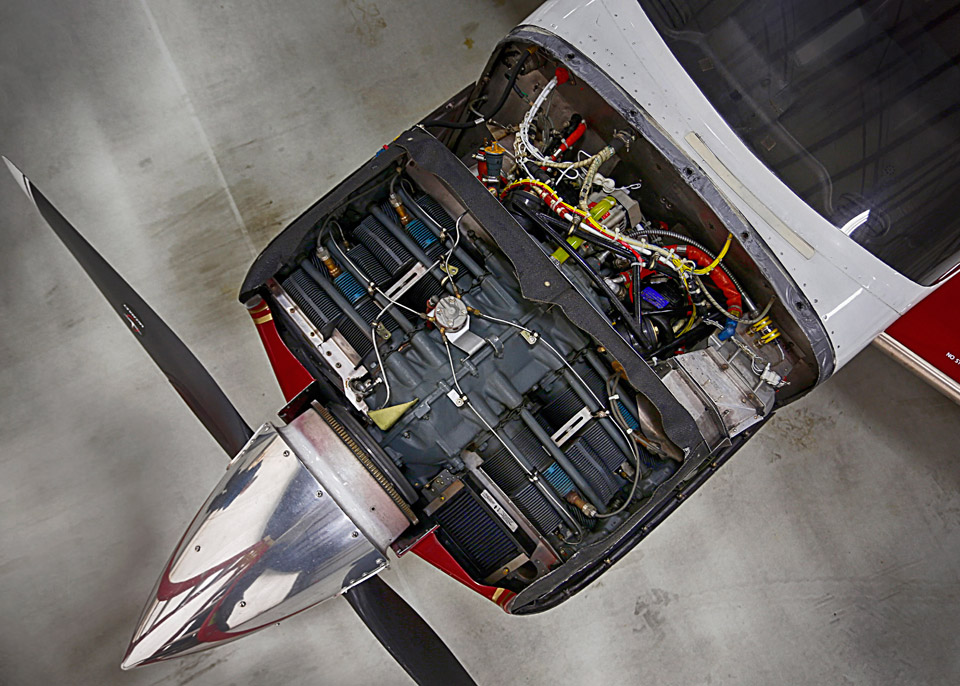
Photography by Chris Rose
It seems somewhat counterintuitive that taking out systems could somehow make an airplane more reliable. But when that system is a failure-prone vacuum pump, and it’s replaced by a standby alternator, increased reliability and safety often are the result.
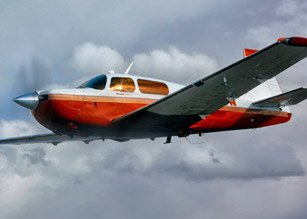 Reliability and safety are exactly what Mike Hall was looking for when he made this transition. More than 20 percent of the roughly 230 hours a year he spends in his 1994 Mooney M20J is at night in instrument conditions in the Northeast. That type of flying would make anyone look for a better way to do business.
Reliability and safety are exactly what Mike Hall was looking for when he made this transition. More than 20 percent of the roughly 230 hours a year he spends in his 1994 Mooney M20J is at night in instrument conditions in the Northeast. That type of flying would make anyone look for a better way to do business.
When Hall—based at the Ithaca Tompkins Regional Airport in Ithaca, New York—purchased the Mooney in 2000, it was well configured, but more or less stock. Almost from the beginning he began looking for backups to all his systems. He put in a loran receiver to back up the Garmin GNS 530 and VOR navigators, and he installed a Mid-Continent Lifesaver—an electric attitude indicator with a self-contained battery backup—to provide redundancy for his attitude indicator.
That attitude indicator was his first step forward into an all-electric cockpit. The Lifesaver replaced his turn coordinator, an instrument he never liked anyway. “That turn coordinator tended to look like a bird flapping its wings,” he said. With that upgrade he had two attitude instruments—one vacuum powered, and one electrically powered. “I felt like I pushed reliability forward,” he said. “But the weakest system all along was the alternator.”
Quest for redundancy. With that assumption in mind, Hall went on a search for the best and most reliable system he could find. He tried two different brands, neither of which made him happy. He even carried an extra alternator with him in the baggage compartment, so that if he ever got stuck somewhere, he at least would have the part. As time went on, however, he began to get suspicious of all sorts of other potential weak points in the electrical system, including the voltage regulator, the wiring, and all of the other components.
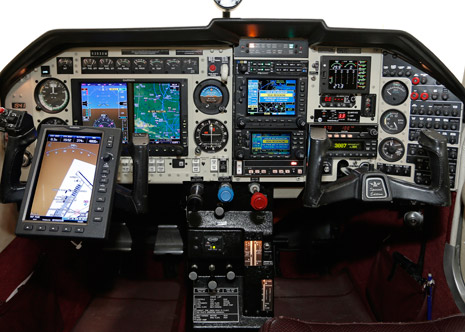 Hall’s quest for redundancy became even more critical when he upgraded to a Garmin G500 primary flight and multifunction display. He now had a glass airplane with one primary electrical source. “And this doesn’t seem like such a good idea,” he said. “Now if I lose the alternator, I’m going to lose a lot more than I did before.” So he started to look at a dual electrical system.
Hall’s quest for redundancy became even more critical when he upgraded to a Garmin G500 primary flight and multifunction display. He now had a glass airplane with one primary electrical source. “And this doesn’t seem like such a good idea,” he said. “Now if I lose the alternator, I’m going to lose a lot more than I did before.” So he started to look at a dual electrical system.
Unless the engine has an additional accessory pad and can accept a second alternator, the vacuum system first must be removed, and an alternator is then installed in its place. And this is the tricky part—adding additional systems usually is easier than taking factory systems away. According to Todd Adams, the manager at Lancaster Avionics in Lititz, Pennsylvania, the first place to look is the aircraft’s type certificate data sheet. If this document lists the vacuum pump as required equipment, the approval process is more complicated—not impossible, but not easy, either. If the vacuum pump isn’t listed, taking it out and replacing it could be as easy as getting the shop to sign off on a Form 337 as a field approval and going on your way.
Unfortunately for Hall, clearly listed in black and white on page 38 of the Mooney’s type certificate data sheet are five acceptable vacuum pumps, one of which must be installed, or the aircraft is considered VFR only. Hope seems to come in the form of a note stating that removal of the vacuum pump is possible if an STCed alternative is installed and it meets the applicable regulations. Alas, Hall couldn’t find a backup alternator that was STCed for the M20J.
Adams says the easiest road is an STCed system. “In these cases, it doesn’t matter what the type certificate says. Look for an STC that will get it done for you.”
Want to lose vacuum?
There are specific steps that must be followed if you want to get rid of your vacuum pump.
- Determine the engine’s potential. Is a pad available for a backup alternator? Do you have the capability for a battery backup? The FAA requires redundancy. You have to figure out if your airplane can handle a new redundant system.
- Check out the type certificate. Google “Type Certificate Data Sheet.” The FAA’s complete list of type certificates includes a lot of gems about your airplane. If the vacuum pump is listed as required equipment, you have some work to do. If not, it may be as easy as a Form 337.
- Engage the shop. Talk to the folks where you plan to do the work and make sure they are involved in the process early.
- Find an STC. If an STC exists for your airplane, buy it. Otherwise, you’ll need a field approval.
- Get the drawings. If you need a field approval, you’ll need drawings for a final approval. Talk to the factory, your owner’s group, and if all else fails, pay a DER.
- Get it approved. It’s important to get your approval before the work is begun.
Finding help. Knowing the removal wasn’t going to be easy, Hall set about trying to find some help. He reached out to the Mooney factory; the folks at B&C Specialty Products, which makes the backup alternator; Weber Aircraft Distributors; and his contacts at the local FSDO. When Hall learned that installing a B&C alternator was technically possible, he then had to figure out how to get the approvals. In this case the factory proved to be a big resource; it was able to provide the drawings and give him the approved data that the FAA could work on for a final sign-off.
Adams says that other owners in Hall’s situation probably would have to hire a FAA designated engineering representative (DER) to create approved data that can be used as the basis for a one-time field approval. The last time Lancaster Avionics used a DER to make this happen, it cost $3,500 and took about two months. “Not just any DER will do,” Adams said. “I found a really good one and things went smoothly. Trying to find the right guy can get challenging.” Hall elected to save the money by doing most of the legwork himself. “He basically handed it to us on a platter,” Adams said.
“To do this was not trivial,” Hall explained. He has nothing but good things to say about everyone who was involved, but the difference in success came down to three factors.
The first and biggest decision is picking the right shop, he said. Weber, an aircraft dealer and maintenance shop based in Lancaster, Pennsylvania, did the vacuum pump removal and backup alternator installation. Hall calls Weber’s Dorn Clare a “genius” for figuring out a workaround to deal with the unusual tachometer and its space limitations, and for installing new equipment and wiring in a tight Mooney cowling. He’s been going to Weber since he bought the airplane, and it’s clear that a good relationship with the shop helped the process. Hall also gives praise to Lancaster Avionics. “They did a phenomenal job. It’s better than the OEM,” he said. “If you’re going to do something like this, going to a top-rated shop is worth it.”
Another area that clearly helped Hall was having a good working relationship with the Rochester Flight Standards District Office. He had worked with the office previously on unrelated business, and he said he’s found that having a good attitude of partnership and teamwork with the FAA goes a long way toward getting the resolution you want. Ultimately his case had to be sent to the New York Certification Office, but once there it was relatively painless. “The paperwork was easy because I understood clearly what I wanted to do and how I wanted to go about it,” he said. “If I had been sloppy, there would have been delays. When I hear complaints about the FAA bureaucracy, I often wonder who is really at fault.”
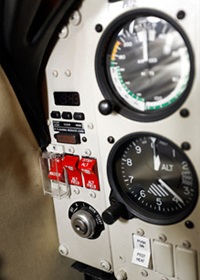 Finally, patience seems to have been a virtue in this case. The entire process took about two years, from the tire-kicking stage to final approval, even though the paperwork was only with the FAA for two months. Hall’s patience and willingness to work through the process got him a great panel at less cost. But that’s certainly not the route for everyone.
Finally, patience seems to have been a virtue in this case. The entire process took about two years, from the tire-kicking stage to final approval, even though the paperwork was only with the FAA for two months. Hall’s patience and willingness to work through the process got him a great panel at less cost. But that’s certainly not the route for everyone.
A few options. Adams says you can do as Hall did and save yourself some money, but there are a number of ways to go about getting rid of the airplane’s vacuum pump if you’re looking for options. Assuming an STC isn’t available for a second alternator, you can go the DER route and pay for drawings. If you do that, he advises timing the process so that the two months the DER requires to do the work are completed prior to the install. It’s forbidden for a shop to begin altering the airplane beforehand.
If you don’t want to go with a second alternator, there are alternatives, depending on the type of equipment the owner is putting in the panel. The FAA has specific guidance on battery backup options, making those a possible—if potentially problematic—option. Those batteries could be self-contained as part of the unit, additional stand-alone backup power, or a number of other options, he says. Regardless of the solution, the installation must act as two independent power sources, as Hall’s primary and backup alternator do.
Now two years after the installation, Hall says everything is running perfectly. “I feel hugely better,” he says. He loves the panel, and feels confident in the redundancy. “The chances of a complete electrical failure are small. The standby alternator manages itself.” He also says he doesn’t have any regrets, despite being the first person to go through the process with the New York Certification Office—if not one of the first nationally in an M20J. In fact, the only thing he said he would change at this point is to put in a digital engine management system. That promises to be just a little bit easier than ripping out the vacuum system.
Email [email protected].

